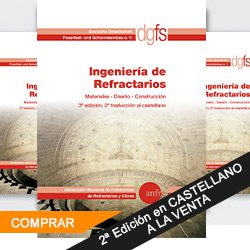Markets saw a second consecutive round of contract price increases for calcined alumina material, but a change in feedstock costs dynamics and availability could soften the market later in the year.
Calcined alumina prices for 2019 contracts have settled at higher levels than last year due to continued strong demand from the refractories sector, although participants report market tightness is expected to ease.
Following a prolonged period of contract negotiations that lasted for most of the fourth quarter of 2018 and, in some cases, into January and February of this year, agreements signed so far still show an appreciation trend, although some market participants foresee stabilizing elements taking hold.
On average, Fastmarkets IM’s 2019 contract prices for calcined alumina – including both ground and unground material – are 5-6% higher than in early 2018, confirming a bullish trend highlighted during negotiation phase last quarter.
Fastmarkets IM assessed the price for unground calcined alumina for 2019 contracts at $750-850 per tonne ex-works Europe and the United States on Thursday February 7, against $780-830 per tonne the previous month and $730-780 per tonne at this time last year.
Meanwhile, Fastmarkets IM’s price assessment for ground calcined alumina, as well as medium-soda calcined alumina, remained stable at $860-1,000 per tonne ex-works for Europe and the US on Thursday, after increasing from $860-960 per tonne in December.
«We have increased all our selling prices [for 2019], by a range of 5-15% depending on previous [price] levels, specs and volumes,» one supplier said, much in agreement with comments made by other sellers.
Most customers in conversation with Fastmarkets IM acknowledged a varying range of higher prices for early 2019 contracts.
The range is due to to a number of factors, including a prolonged tightness that affected the calcined alumina market throughout 2018. Insufficient supply could not meet the growing levels of demand from the refractories market across the board, which for its part was undergoing a bullish phase.
At the same time, participants stress the shortage that was tangible across the market last year may be easing, citing improving supply conditions, adjusting demand and falling smelter grade alumina (SGA) prices.
Fastmarkets MB’s index for SGA was $365 per tonne fob Australia on February 7, compared with $428.75
on November 7, 2018.
Another tendency highlighted by both buyers and sellers is that stock levels at consuming companies
appear to be high, following strong buying during most of last year. This, in turn, is leading to a slower
contracting pattern in early 2019.
«The situation is not as tense as before. We can see that buyers’ warehouses are stocked. Probably,
during to the peak of the shortage, customers sourced as much as they could. Now they are more
relaxed,» a distributor said.
«We booked volumes for the first couple of quarters, in the hope that market conditions would improve in
the second part of the year,» a large refractories producer said.
Another buyer also said he had contracted for about six months, and that he was willing to consider
quarterly renewals rather than longer-term agreements to take advantage of potential bearishness.
A second importer said: «The supply chain has inventory sitting at origin, at port and with distributors, as
well as with customers. There is stock around, and this is visible. This may mean demand adjusting in the
second half.»
A third buyer commented: «We perceive availability across a number of raw materials is improving,»
adding that «panic» is receding.
Alumina hydrate: wider spread
Meanwhile for alumina hydrate (ATH), latest assessments for 2019 contracts seem to point to wider
spreads compared with previous levels.
Fastmarkets IM assessed 2019 contract prices for damp ATH, bulk, at $250-300 per tonne fob refinery on
February 7, compared with $280-300 per tonne previously.
Market participants have been watching this market carefully, as supply issues last year from the capacity
shutdown of Brazil’s Alunorte, as well as the sanctions against Russian supplier Rusal, disrupted trade
flows, both for feedstock such as SGA and for ATH.
The North American ATH market was mostly covered during 2018 on previous stockpiling, thus largely
avoiding any immediate shortage. For this year, hopes from buyers are that a gradual return to more
standard trade flows (if Alunorte returns online and the sanctions on Rusal are cancelled) could have a
softening effect on prices in the coming quarters.
The higher spread seen in the latest assessments is also reflecting the market’s differences between large
buyers, who historically have been on multi-annual contractual arrangements and with better negotiating
power, and smaller or newer customers, which may be in a less favorable negotiating position.



